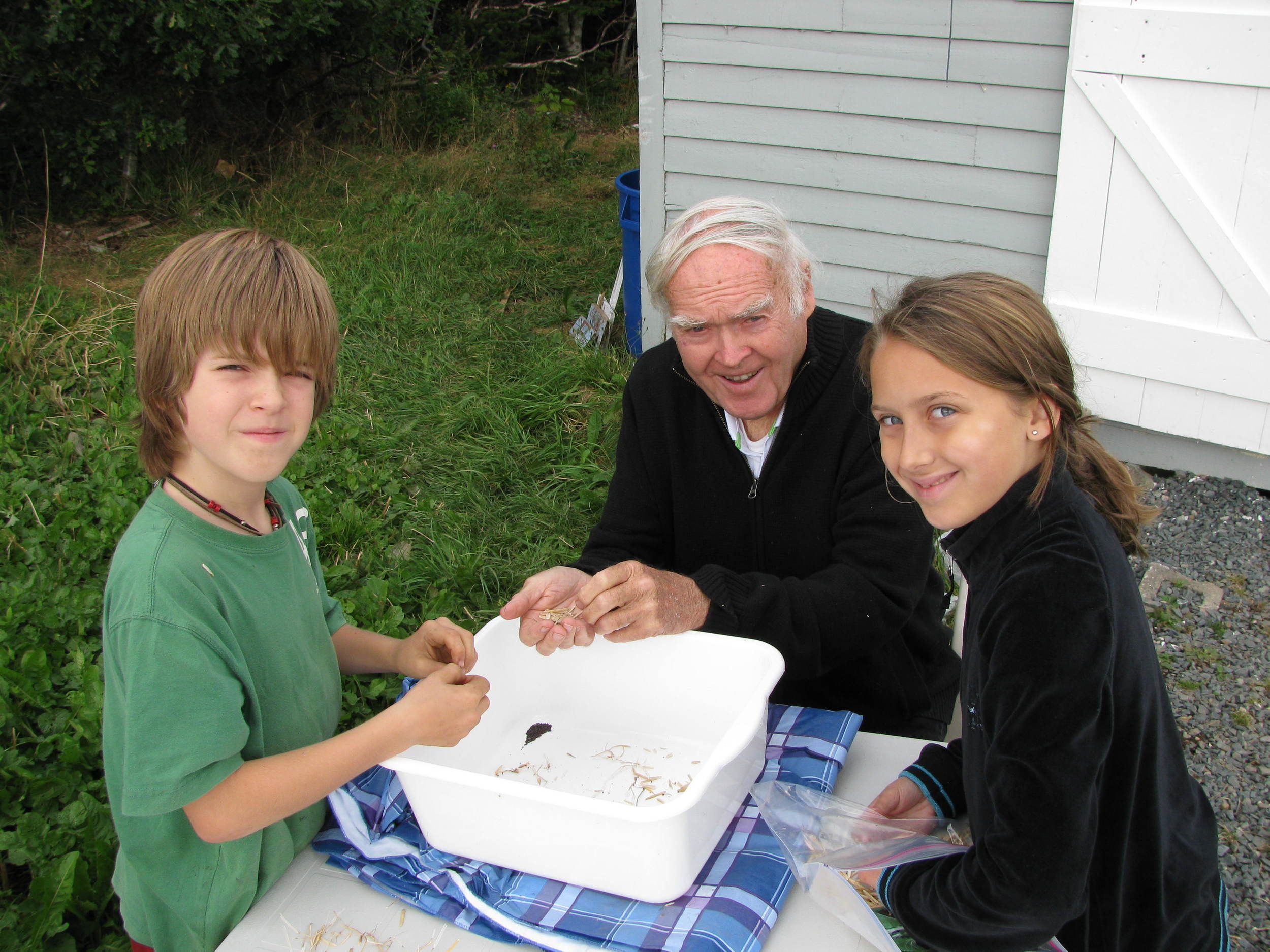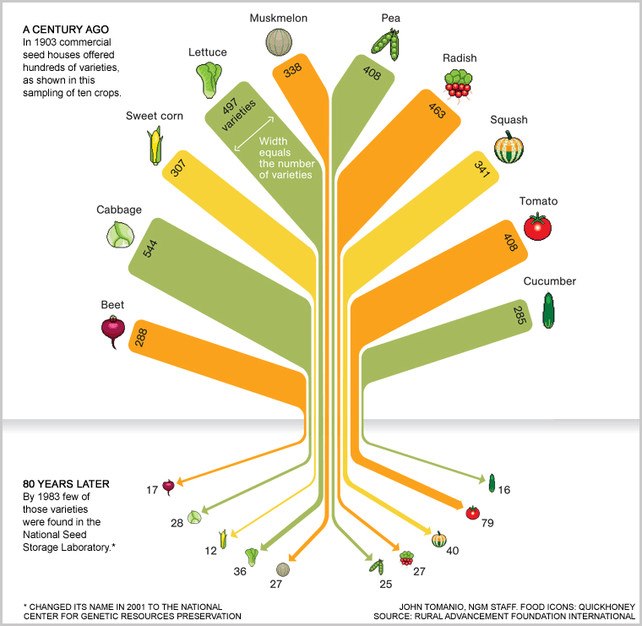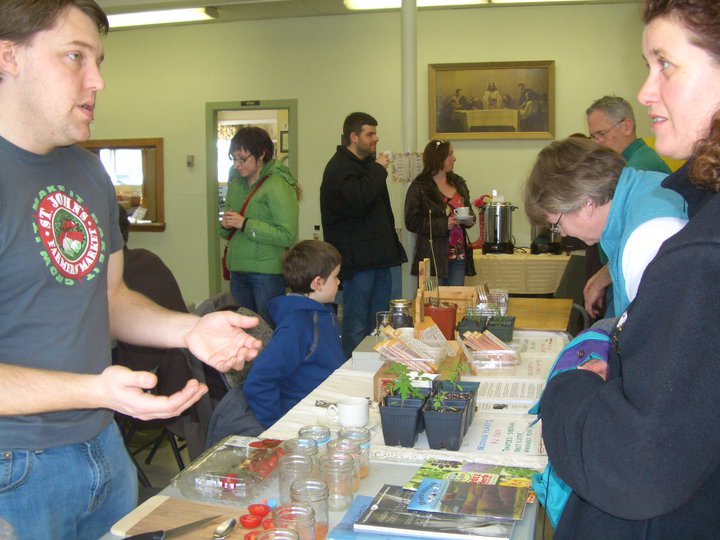 Like a lot of skills related to local food, seed saving is an old idea that's deservedly getting lots of new attention. Saving seeds from your home or community garden makes sense for a lot of reasons and we want to convince you to give it a try. People are starting to get excited, daydreaming about the growing season and perusing seed catalogues, and we recommend that you read up a bit on seed saving and then factor that into your garden plans and seed purchases this year.
Like a lot of skills related to local food, seed saving is an old idea that's deservedly getting lots of new attention. Saving seeds from your home or community garden makes sense for a lot of reasons and we want to convince you to give it a try. People are starting to get excited, daydreaming about the growing season and perusing seed catalogues, and we recommend that you read up a bit on seed saving and then factor that into your garden plans and seed purchases this year.
This post is an excerpt from the Seed Saving Workshop, where you can find all the how-to information to get started saving seeds. Post questions on the forum to connect with fellow seed savers. To find out just how amazing seeds are, check out 'What are Seeds?'.
7 Reasons to Save Seed
1. Preserve plant diversity: Seeds of Diversity estimates “that a few generations ago farmers and gardeners grew over 35,000 varieties of food plants in Canada” but in the 20th century 3/4 of that food biodiversity died out. Heirloom seeds are ones that were in circulation before 1940. When we lose heirloom varieties, we also lose their resilient characteristics and the potential they have for feeding us in a changing world. As well, we lose the stories of the hard work that helped to create those varieties over generations. Less plant diversity also means that more pesticides, herbicides, and industrial interventions are needed to maintain access to a healthy food supply. For more information on preserving seed diversity, check out these really interesting videos:
Banking Diversity (USC Canada)
One seed at a time: protecting the future of food (Cary Fowler)
2. Lower garden costs: Seed saving can help you to maintain a garden year after year with lower costs. Purchasing seeds or transplants for all of your garden crops can be expensive, but seed savers use their own skills and time to collect seed for future use and they save money.
3. Build appreciation for nature: When you save seeds you allow a plant to go through its entire life cycle, rather than harvesting it early to eat. You may be familiar with how plants look until they are ready to eat, but the amazing life of plants continues after that and seed saving will allow you to see what happens next.
4. Build community: Throughout human history the seeds cultivated by communities reflected their unique cultures, tastes and priorities. There is a lot of storytelling in seeds. Many people are proud of the seeds they save and want to pass them on. Today, communities host events where local gardeners get together to socialize and share seeds and knowledge. Visit the Seeds of Diversity website for information on hosting or attending seed events. Consider hosting a seed-themed event through your local community garden. Apply for funds to support a seed event through the Bauta Family Initiative on Canadian Seed Security.
5. Cultivate locally acclimated plants: Gardeners can choose to save the seeds from plants that did especially well in their gardens, preserving successful characteristics. They try to choose seeds that are resistant to local pests, thrive in their area’s climate, and do well in their area’s soil, among other things. Seeds that have been adapted to the local environment over time are called folk varieties.
6. Gain access to unusual and rare plants: Many gardeners who save seed are interested in growing unusual or rare varieties of plants, particularly heirlooms. Obtaining their first packet of those hard-to-find seeds can be difficult but once they get them, gardeners can save their own seeds year after year to continue to cultivate those plants and pass them on. Becoming a Seeds of Diversity member to connect with other seed savers across Canada is a good way to get started finding unique varieties.
7. Connect to our heritage: Seed saving is a part of our kitchen gardening heritage in Newfoundland and Labrador. Most families kept a small garden to grow fresh food that supplemented what they caught, hunted, and imported. Some seeds would have been purchased from local retailers, but other varieties were saved each year and planted again, like potatoes and cabbages. It was common for people to share and swap seeds within their community and with visitors from farther away. Read this article by Alison Dyer to find out more about our seed heritage.
Convinced that seed saving is a good idea for your garden? Check out the free Root Cellars Rock Seed Saving Workshop to get started!






